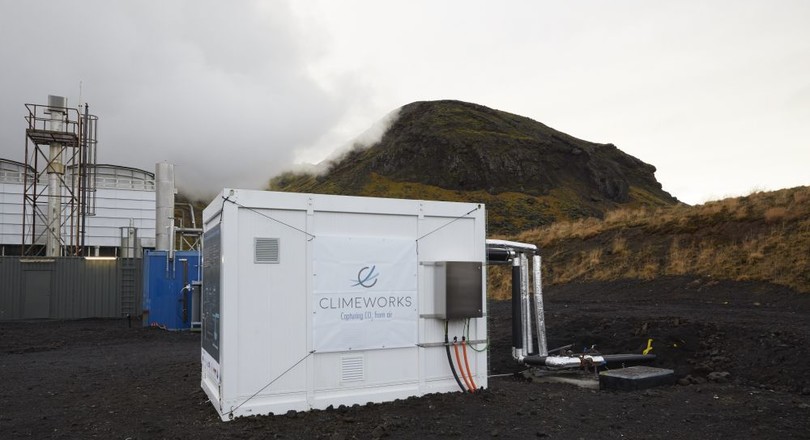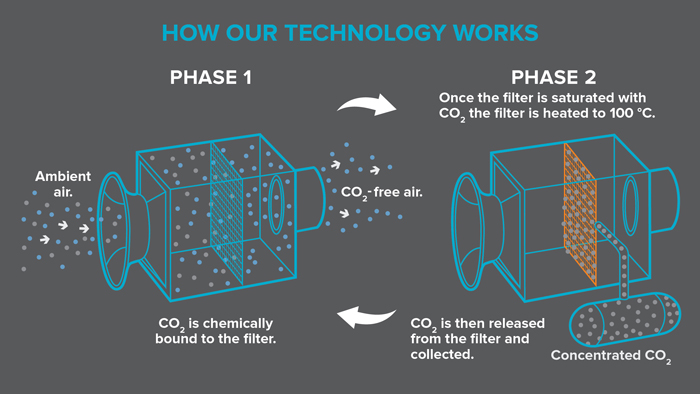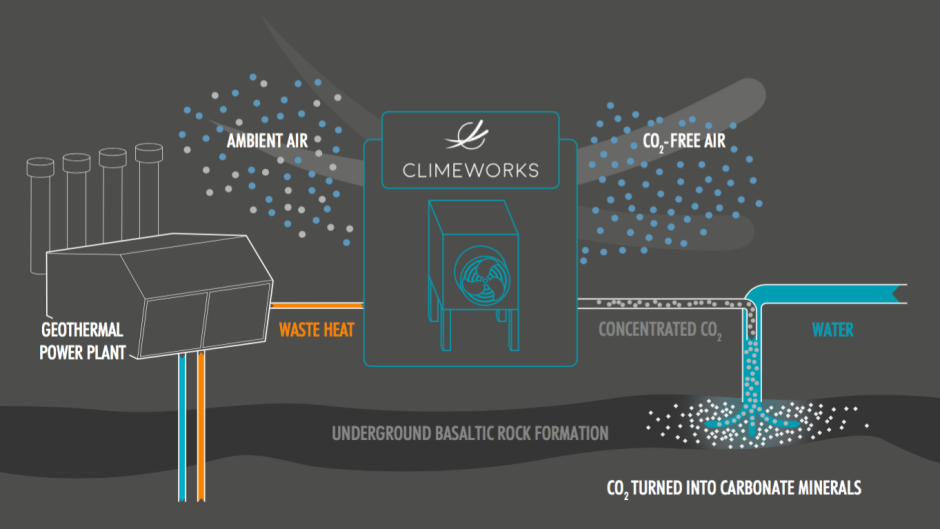
Iceland plans to remove CO2 from the air and then pump it into the ground and store it in the rock. The CarbFix2 project of Swiss start-up Climeworks and Iceland's Reykjavik Energy was launched last week.
The special feature of this project is that the CO2 is being removed from the air. That is a major difference versus the CO2 sequestration proposed in the latest coalition agreement. The latter aims to store some of the CO2 emissions from energy-intensive companies in the ground. At best, that concept simply prevents some extra CO2 from entering the atmosphere, but does nothing to reduce the volume of greenhouse gases already in the air. A second difference is that the sequestration intended by the coalition agreement stores CO2 in gas bottles, while the CO2 in Iceland's project is sequestrated to the ground.
Plenty of heat available
Climeworks provides the technology to scrub CO2 from the air. Fans are used to blow air through a filter containing an amine, a substance commonly used to capture CO2. One issue with this is that removing CO2 from the amines requires lot of heat, and that's no different with the Climeworks technology. However, if that heat is close to hand in large quantities, then it doesn't matter that the removal of the CO2 from the filter requires a lot of energy. And that's exactly what we find on Iceland: the volcanic island has vast amounts of geothermal heat.

Basalt
Iceland has yet another advantage. The substrate into which the CO2 is pumped is basalt rock, with which the CO2 forms a chemical compound. This means that the CO2 does not remain in the gas phase in the ground, but inextricably mineralises with the rock. Last year, it was also demonstrated that this mineralisation process occurs much faster than had been expected. According to Energy Reykjavik, Iceland has now permanently sequestrated some 18,000 tons of CO2 at $30 per ton.

The CarbFix2 project is located in Hellisheidi, close to Iceland's capital city. That's where the island's largest geothermal power plant is sited. This plant has a capacity of 300 MW of electricity and 130 MW of heat. The project is intended to test the technology, according to the Climeworks website. The trial involves sequestrating 50 tons of CO2 per year. Climeworks already has a plant in Switzerland that removes some 1,000 tons of CO2 from the air annually and supplies it to nearby greenhouses. Climeworks claims a price per ton of CO2 of $100.
Barely a drop in the ocean
The benefit of combining removal of CO2 from the air with binding it in basalt is that this can be done anywhere on earth where basalt formations are found beneath our feet. So CO2 sequestration does not necessarily need to occur at fossil fuel-powered power plants or industrial plants with high CO2 emissions. At the same time, however, the stats indicate that the volume of CO2 removed from the air is still barely a drop in the ocean. Given the total human emissions of some 37 billion tons of CO2 per year, 1,000 tons is really not very much at all. What's more, not every location is going to have access to a sufficient (sustainable) heat source.
Climeworks is not the only company wanting to remove CO2 directly from the air. Global Thermostats uses a similar technology as Climeworks, and Carbon Engineering uses a system with calcium oxide. Carbon Engineering is currently building a plant that does not store the sequestrated CO2 in the ground, but uses hydrogen to convert it directly to petrol or diesel.
Did you like this article? Subscribe to our weekly newsletter.
Opening photo: the CO2 collector on Iceland. Photo: Climeworks / Zev Starr-Tambor.
Nieuwsbrief
Vond je dit een interessant artikel, abonneer je dan gratis op onze wekelijkse nieuwsbrief.

